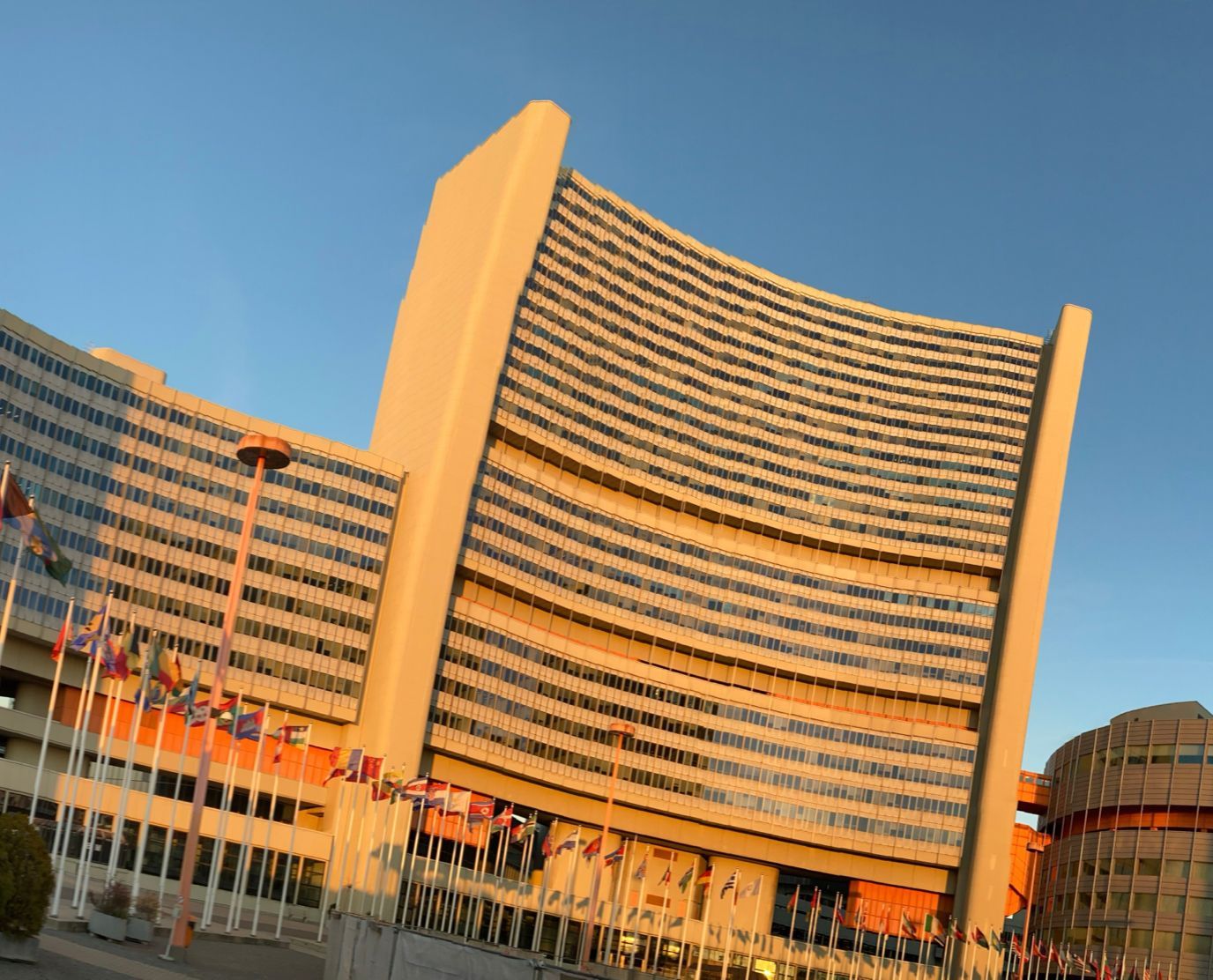10 March 2023
Success in New Space requires innovation, cooperation and a common rulebook

UNOOSA place to build a new rulebook? (Image: Adobe Stock)
Writing in an article for Foreign Policy, Deganit Paikowsky, a researcher and lecturer in the department of international relations at the Hebrew University of Jerusalem says that “he future space race will be won not by those whose technological advancements are superior but by the rule-makers—those whose economic, legal, social, and political institutions are most innovative, attractive, and popular to other spacefaring nations and entities.” I find this such a great quote. Would though go beyond this, and say that success in New Space requires a recipe of commercial innovation, cooperation, above all, governance.
This isn’t to say that grand, public agency missions and the old ways of doing things are done just yet. Speaking at a briefing on March 7th, NASA managers said that data from Artemis-1 mission found no major problems with the SLS rocket or the Orion capsule, and paves the way for Artemis-2 in 2024. NASA have also delivered hardware for their Lunar GNSS Receiver Experiment (LuGRE), as part of the Firefly Aerospace lunar lander mission in 2024. LuGRE will attempt to connect with GNSS satellites and pave the way for accurate navigation systems on the Moon, similar to GPS.
The UK is continuing with its ambitious plans, and this week their space agency announced funding for numerous new projects, including research into resource utilisation on the Moon, systems for recycling breathing gases and exploring the possibility of nuclear propulsion. The UK boldly claims that it intends on capturing 10% of the space economy, but will of course be largely powered by its burgeoning private sector.
Public agencies are beginning to hand the reins over to the commercial sector, but at the moment, they still play a key role in space exploration, and moreover, providing funding and acting as anchor customers for emerging companies.
Can we still cooperate within an ideologically fuelled conflict?
Innovation provided by the private sector will undoubtedly be crucial for our future in space. However, that innovation will only ever be properly utilised through cooperation, in order to share technology, achieve safe and sustainable goals, and create a shared rulebook in order to properly regulate industries and avoid conflict. Despite ESA’s u-turn on sending astronauts to China’s Tiangong station, there has been more evidence of ensuring cooperation.
Reports this week informed us that France is preparing to send a pair of advanced telescopes to China, as part of a joint project this year. The venture will mark the launch of a new observatory for monitoring cosmic explosions. Despite ESA’s position on Tiangong, European nations will still work with China on their lunar Chang’e missions, and we are still unsure of ESA’s position on working with China on their lunar station plans (ILRS), although as with their position on Tiangong, the current political climate may not allow for that.
An article from the Asia Times really signified this new era of ideological conflict by saying in its headline that a “New Cold War reaches China’s Tiangong space station”. The article goes on to say that politics undoubtedly played the biggest part in ESA’s recent decision, and this certainly seems to be the case. Each week we read yet more evidence of geopolitical tensions affecting relationships in the space sector, and the emergence of a global war of ideologies, with the Ukraine conflict not looking too dissimilar from Spain in the 1930s. If we were to learn our lessons from the 20th century, we know that a war of ideologies runs deep, and may not not be resolved in the near future. In fact, it may be valid to say that the 20th century Cold War never actually ended, but was merely put on hold during Russia’s failed attempt at democracy.
The consequence of international sanctions and severed ties with Russia may also be forcing a resetting of relations in space. Iran and Russia have already been working closely together, and reports from Sunday say that Iran plans to launch two of its own satellites in cooperation with Russia, in December this year. While the French-Chinese cooperative project may be an example of how relations can still work, we still see evidence of the emergence of new space blocs, galvanised by the consequences of geopolitics. Moreover, two sides are emerging, with the US and its allies on one, and nations such as Russia, China and Iran on the other.

Earth orbit to be far busier by 2030 (Image: Adobe Stock)
Rules and unity for success in New Space
While we still seem some way off establishing a global framework for New Space exploration, the commercial innovation is still moving at a rapid pace. iSpace have provided other update regarding their lunar lander mission, and is due to arrive on April 25th. If successful, it will be the first commercial mission to the Moon, carry out the first commercial transaction on the lunar surface, and is also transporting the UAE’s Rashid rover.
Commercial entities continue to grow their presence in Earth orbit as well, with debris removal company Astroscale on course to carry out their Cleaning Outer Space Mission through Innovative Capture (COMIC) mission in 2026. The mission will look to remove two British satellites from orbit. Similarly, space logistics company Starfish Space (US) have raised additional funding to develop their Otter Orbital Transfer Vehicle (OTV). SpaceX are due to launch a demonstration for Starfish this summer, where the small demonstrator will attempt to dock with another test spacecraft. Orbital logistics is set to become a dominant industry in its own right, providing orbital transfer, satellite servicing and refuelling.
It’s no wonder that this will be growth industry when we consider the rapidly increasing number of objects in Earth orbit. SpaceX’s Starlink and Amazon’s Kuiper are just two megaconstellations under development, and China also recently announced plans for launching their own similarly sized constellation. Furthermore, Apple have announced that their direct-to-smartphone satellite connectivity is being expanded to six more countries. Should this technology become a standard feature on all new smartphones, we can see just how satellite numbers will sharply increase by the end of the decade.
This may all be quite impressive, but as the article from Foreign Policy says, this technological innovation can only be put to use if the “economic tools’ are in place, such as the legal framework to manage them. There have been efforts, such as the US-led Artemis Accords, or the Chinese ILRS programme. However, it seems unlikely that one will sign-on to the other’s framework. A recent US intelligent report sates that China will become a commercial competitor by 2030, and so the need for such a framework is becoming ever-more pressing.
It’s important that humanity places as much importance on making the rules, as creating the tools. More importantly, it’s vital that the rules are made together, to ensure that space is the benefit for all. Last weekend, members of the UN embarked on putting the final details on the long-awaited High Seas Treaty, limiting pollution and protecting biodiversity in international waters. Perhaps this can be one example of how nations can come together, and begin constructing similar frameworks for space.
For space to be a success and a benefit for all humankind and our planet, we must make the rules together.
External Links
This Week
*News articles posted here are not property of ANASDA GmbH and belong to their respected owners. Postings here are external links only.
Our future in space

UNOOSA place to build a new rulebook? (Image: Adobe Stock)
10 March 2023
Success in New Space requires innovation, cooperation and a common rulebook
Writing in an article for Foreign Policy, Deganit Paikowsky, a researcher and lecturer in the department of international relations at the Hebrew University of Jerusalem says that “he future space race will be won not by those whose technological advancements are superior but by the rule-makers—those whose economic, legal, social, and political institutions are most innovative, attractive, and popular to other spacefaring nations and entities.” I find this such a great quote. Would though go beyond this, and say that success in New Space requires a recipe of commercial innovation, cooperation, above all, governance.
This isn’t to say that grand, public agency missions and the old ways of doing things are done just yet. Speaking at a briefing on March 7th, NASA managers said that data from Artemis-1 mission found no major problems with the SLS rocket or the Orion capsule, and paves the way for Artemis-2 in 2024. NASA have also delivered hardware for their Lunar GNSS Receiver Experiment (LuGRE), as part of the Firefly Aerospace lunar lander mission in 2024. LuGRE will attempt to connect with GNSS satellites and pave the way for accurate navigation systems on the Moon, similar to GPS.
The UK is continuing with its ambitious plans, and this week their space agency announced funding for numerous new projects, including research into resource utilisation on the Moon, systems for recycling breathing gases and exploring the possibility of nuclear propulsion. The UK boldly claims that it intends on capturing 10% of the space economy, but will of course be largely powered by its burgeoning private sector.
Public agencies are beginning to hand the reins over to the commercial sector, but at the moment, they still play a key role in space exploration, and moreover, providing funding and acting as anchor customers for emerging companies.
Can we still cooperate within an ideologically fuelled conflict?
Innovation provided by the private sector will undoubtedly be crucial for our future in space. However, that innovation will only ever be properly utilised through cooperation, in order to share technology, achieve safe and sustainable goals, and create a shared rulebook in order to properly regulate industries and avoid conflict. Despite ESA’s u-turn on sending astronauts to China’s Tiangong station, there has been more evidence of ensuring cooperation.
Reports this week informed us that France is preparing to send a pair of advanced telescopes to China, as part of a joint project this year. The venture will mark the launch of a new observatory for monitoring cosmic explosions. Despite ESA’s position on Tiangong, European nations will still work with China on their lunar Chang’e missions, and we are still unsure of ESA’s position on working with China on their lunar station plans (ILRS), although as with their position on Tiangong, the current political climate may not allow for that.
An article from the Asia Times really signified this new era of ideological conflict by saying in its headline that a “New Cold War reaches China’s Tiangong space station”. The article goes on to say that politics undoubtedly played the biggest part in ESA’s recent decision, and this certainly seems to be the case. Each week we read yet more evidence of geopolitical tensions affecting relationships in the space sector, and the emergence of a global war of ideologies, with the Ukraine conflict not looking too dissimilar from Spain in the 1930s. If we were to learn our lessons from the 20th century, we know that a war of ideologies runs deep, and may not not be resolved in the near future. In fact, it may be valid to say that the 20th century Cold War never actually ended, but was merely put on hold during Russia’s failed attempt at democracy.
The consequence of international sanctions and severed ties with Russia may also be forcing a resetting of relations in space. Iran and Russia have already been working closely together, and reports from Sunday say that Iran plans to launch two of its own satellites in cooperation with Russia, in December this year. While the French-Chinese cooperative project may be an example of how relations can still work, we still see evidence of the emergence of new space blocs, galvanised by the consequences of geopolitics. Moreover, two sides are emerging, with the US and its allies on one, and nations such as Russia, China and Iran on the other.

Earth orbit to be far busier by 2030 (Image: Adobe Stock)
Rules and unity for success in New Space
While we still seem some way off establishing a global framework for New Space exploration, the commercial innovation is still moving at a rapid pace. iSpace have provided other update regarding their lunar lander mission, and is due to arrive on April 25th. If successful, it will be the first commercial mission to the Moon, carry out the first commercial transaction on the lunar surface, and is also transporting the UAE’s Rashid rover.
Commercial entities continue to grow their presence in Earth orbit as well, with debris removal company Astroscale on course to carry out their Cleaning Outer Space Mission through Innovative Capture (COMIC) mission in 2026. The mission will look to remove two British satellites from orbit. Similarly, space logistics company Starfish Space (US) have raised additional funding to develop their Otter Orbital Transfer Vehicle (OTV). SpaceX are due to launch a demonstration for Starfish this summer, where the small demonstrator will attempt to dock with another test spacecraft. Orbital logistics is set to become a dominant industry in its own right, providing orbital transfer, satellite servicing and refuelling.
It’s no wonder that this will be growth industry when we consider the rapidly increasing number of objects in Earth orbit. SpaceX’s Starlink and Amazon’s Kuiper are just two megaconstellations under development, and China also recently announced plans for launching their own similarly sized constellation. Furthermore, Apple have announced that their direct-to-smartphone satellite connectivity is being expanded to six more countries. Should this technology become a standard feature on all new smartphones, we can see just how satellite numbers will sharply increase by the end of the decade.
This may all be quite impressive, but as the article from Foreign Policy says, this technological innovation can only be put to use if the “economic tools’ are in place, such as the legal framework to manage them. There have been efforts, such as the US-led Artemis Accords, or the Chinese ILRS programme. However, it seems unlikely that one will sign-on to the other’s framework. A recent US intelligent report sates that China will become a commercial competitor by 2030, and so the need for such a framework is becoming ever-more pressing.
It’s important that humanity places as much importance on making the rules, as creating the tools. More importantly, it’s vital that the rules are made together, to ensure that space is the benefit for all. Last weekend, members of the UN embarked on putting the final details on the long-awaited High Seas Treaty, limiting pollution and protecting biodiversity in international waters. Perhaps this can be one example of how nations can come together, and begin constructing similar frameworks for space.
For space to be a success and a benefit for all humankind and our planet, we must make the rules together.
Share this article
External Links
This Week
*News articles posted here are not property of ANASDA GmbH and belong to their respected owners. Postings here are external links only.
10 March 2023
Success in New Space requires innovation, cooperation and a common rulebook

UNOOSA place to build a new rulebook? (Image: Adobe Stock)
Writing in an article for Foreign Policy, Deganit Paikowsky, a researcher and lecturer in the department of international relations at the Hebrew University of Jerusalem says that “he future space race will be won not by those whose technological advancements are superior but by the rule-makers—those whose economic, legal, social, and political institutions are most innovative, attractive, and popular to other spacefaring nations and entities.” I find this such a great quote. Would though go beyond this, and say that success in New Space requires a recipe of commercial innovation, cooperation, above all, governance.
This isn’t to say that grand, public agency missions and the old ways of doing things are done just yet. Speaking at a briefing on March 7th, NASA managers said that data from Artemis-1 mission found no major problems with the SLS rocket or the Orion capsule, and paves the way for Artemis-2 in 2024. NASA have also delivered hardware for their Lunar GNSS Receiver Experiment (LuGRE), as part of the Firefly Aerospace lunar lander mission in 2024. LuGRE will attempt to connect with GNSS satellites and pave the way for accurate navigation systems on the Moon, similar to GPS.
The UK is continuing with its ambitious plans, and this week their space agency announced funding for numerous new projects, including research into resource utilisation on the Moon, systems for recycling breathing gases and exploring the possibility of nuclear propulsion. The UK boldly claims that it intends on capturing 10% of the space economy, but will of course be largely powered by its burgeoning private sector.
Public agencies are beginning to hand the reins over to the commercial sector, but at the moment, they still play a key role in space exploration, and moreover, providing funding and acting as anchor customers for emerging companies.
Can we still cooperate within an ideologically fuelled conflict?
Innovation provided by the private sector will undoubtedly be crucial for our future in space. However, that innovation will only ever be properly utilised through cooperation, in order to share technology, achieve safe and sustainable goals, and create a shared rulebook in order to properly regulate industries and avoid conflict. Despite ESA’s u-turn on sending astronauts to China’s Tiangong station, there has been more evidence of ensuring cooperation.
Reports this week informed us that France is preparing to send a pair of advanced telescopes to China, as part of a joint project this year. The venture will mark the launch of a new observatory for monitoring cosmic explosions. Despite ESA’s position on Tiangong, European nations will still work with China on their lunar Chang’e missions, and we are still unsure of ESA’s position on working with China on their lunar station plans (ILRS), although as with their position on Tiangong, the current political climate may not allow for that.
An article from the Asia Times really signified this new era of ideological conflict by saying in its headline that a “New Cold War reaches China’s Tiangong space station”. The article goes on to say that politics undoubtedly played the biggest part in ESA’s recent decision, and this certainly seems to be the case. Each week we read yet more evidence of geopolitical tensions affecting relationships in the space sector, and the emergence of a global war of ideologies, with the Ukraine conflict not looking too dissimilar from Spain in the 1930s. If we were to learn our lessons from the 20th century, we know that a war of ideologies runs deep, and may not not be resolved in the near future. In fact, it may be valid to say that the 20th century Cold War never actually ended, but was merely put on hold during Russia’s failed attempt at democracy.
The consequence of international sanctions and severed ties with Russia may also be forcing a resetting of relations in space. Iran and Russia have already been working closely together, and reports from Sunday say that Iran plans to launch two of its own satellites in cooperation with Russia, in December this year. While the French-Chinese cooperative project may be an example of how relations can still work, we still see evidence of the emergence of new space blocs, galvanised by the consequences of geopolitics. Moreover, two sides are emerging, with the US and its allies on one, and nations such as Russia, China and Iran on the other.

Earth orbit to be far busier by 2030 (Image: Adobe Stock)
Rules and unity for success in New Space
While we still seem some way off establishing a global framework for New Space exploration, the commercial innovation is still moving at a rapid pace. iSpace have provided other update regarding their lunar lander mission, and is due to arrive on April 25th. If successful, it will be the first commercial mission to the Moon, carry out the first commercial transaction on the lunar surface, and is also transporting the UAE’s Rashid rover.
Commercial entities continue to grow their presence in Earth orbit as well, with debris removal company Astroscale on course to carry out their Cleaning Outer Space Mission through Innovative Capture (COMIC) mission in 2026. The mission will look to remove two British satellites from orbit. Similarly, space logistics company Starfish Space (US) have raised additional funding to develop their Otter Orbital Transfer Vehicle (OTV). SpaceX are due to launch a demonstration for Starfish this summer, where the small demonstrator will attempt to dock with another test spacecraft. Orbital logistics is set to become a dominant industry in its own right, providing orbital transfer, satellite servicing and refuelling.
It’s no wonder that this will be growth industry when we consider the rapidly increasing number of objects in Earth orbit. SpaceX’s Starlink and Amazon’s Kuiper are just two megaconstellations under development, and China also recently announced plans for launching their own similarly sized constellation. Furthermore, Apple have announced that their direct-to-smartphone satellite connectivity is being expanded to six more countries. Should this technology become a standard feature on all new smartphones, we can see just how satellite numbers will sharply increase by the end of the decade.
This may all be quite impressive, but as the article from Foreign Policy says, this technological innovation can only be put to use if the “economic tools’ are in place, such as the legal framework to manage them. There have been efforts, such as the US-led Artemis Accords, or the Chinese ILRS programme. However, it seems unlikely that one will sign-on to the other’s framework. A recent US intelligent report sates that China will become a commercial competitor by 2030, and so the need for such a framework is becoming ever-more pressing.
It’s important that humanity places as much importance on making the rules, as creating the tools. More importantly, it’s vital that the rules are made together, to ensure that space is the benefit for all. Last weekend, members of the UN embarked on putting the final details on the long-awaited High Seas Treaty, limiting pollution and protecting biodiversity in international waters. Perhaps this can be one example of how nations can come together, and begin constructing similar frameworks for space.
For space to be a success and a benefit for all humankind and our planet, we must make the rules together.
Share this article
External Links
This Week
*News articles posted here are not property of ANASDA GmbH and belong to their respected owners. Postings here are external links only.






















